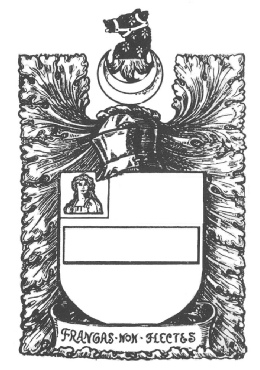Our story of the Bostock family begins in the 1770s in Putney in Surrey (now south-west London), with James and Elizabeth Bostock. But the Bostock family is an ancient one that can trace its roots back to the Domesday Book of 1086.
The name Bostock derives from the manor and village in Cheshire which is now called Bostock Green, but in Saxon times was called Botestoche. The name may refer to a farm owned by Bote, or a secondary settlement of Benedictine monks*. Before the Norman Conquest the manor had been owned by a Saxon named Osmer, a wealthy landowner who owned a number of Cheshire properties as well as houses in Chester, salt-houses and an animal enclosure. After the Conquest, his properties and estates were seized and most of them were granted to the Norman, Richard de Vernon, who was appointed as one of the eight barons under the Norman administration of the county.
Tradition, and pedigrees compiled by Heralds in the sixteenth century, state that Osmer was the ancestor of the Bostock family and that later lords of the manor, who held the manor on a feudal tenure, were descended from him. Whether true or not, the Bostock family flourished over the next several hundred years, many of them giving service to the Crown.
Notable Bostocks from this ancient branch include Adam de Bostock (born circa 1280) who journeyed with Edward I’s army and fought at the battle of Falkirk in 1298 and was knighted by the Hammer of the Scots; his son, Adam (circa 1330-1374) who fought with Edward, the Black Prince at the battle of Cressy in 1346 and Poitiers in 1356, and who was knighted on the battle field of Najera in 1367; another Adam (1365-1414) who became a captain of Richard II’s elite bodyguard of archers; Ralph de Bostock (1392-1421) who was an ‘esquire’ in the King’s retinue and fought at the battle of Agincourt in 1415, apparently receiving his knighted on the battle field; and Ralph (circa 1440-1482) who fought for the Yorkist cause at the battle of Hedgeley Moor (1464). The last of this illustrious line was William (1470-circa 1515) who died without issue and left the manor to his sister, Anne. With his death, the direct male line of the Bostock family and lords of the manor came to an end. However, their descendants ensured that the name lived on, and marriage alliances saw the family spread to the countries of Lancashire, Derbyshire, Hertfordshire, Berkshire, Surrey and London.
Despite the efforts of many family historians, it has not been possible to trace our family line back further than the 1770s to link it with this illustrious line of Bostocks, but there can be no doubt that the connection exists, and the Bostocks featured in these pages may be related to the Bostock Fuller branch which flourished in Surrey in the seventeenth century and whose stone coat-of-arms can be found in the Church of St Peter in Tandridge.
* ‘Stoche’ is from the Saxon word for a secondary settlement or outlying farm which was invariably surrounded by fence of tree-stumps, hence the word stockade; ‘Bote’ derives from a personal name, possibly St Botolph who introduced the Benedictine order into Britain in the seventh century.


